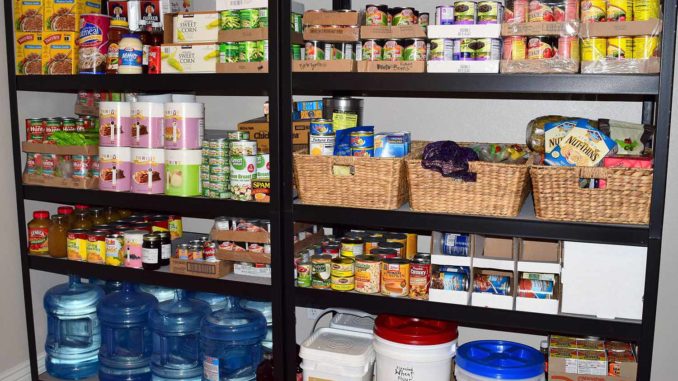
Long term food supply is an essential part of being self-reliant. It allows us the freedom to be far less dependent on grocery stores in an emergency. Researchers believe that the average American goes to the grocery store 1.5 times per week. If there is a war, major disaster, crop shortage, or a product becomes contaminated, it can limit the quality and quantity of food available. A well-stocked food storage pantry can provide food for your family for months, even years. Storing a surplus of food products your family uses regularly can be a great insurance policy for the unexpected. FEMA recommends that every household should store emergency food and water supplies in their “Emergency Food & Water Guide“.
What is the difference between having
a short or long term food supply?
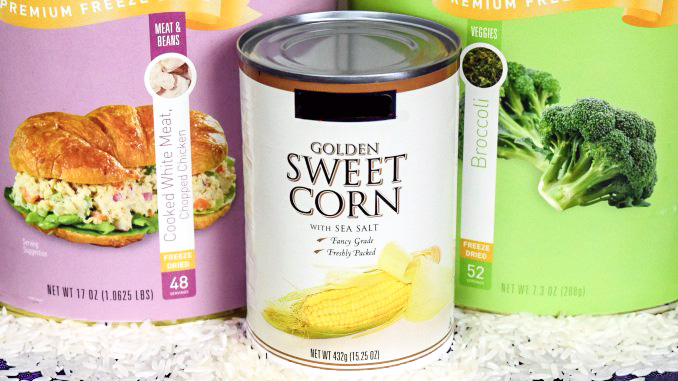
Farmers and homesteaders have relied on food storage for thousands of years. It was essential for farmers to preserve seasonal crops so they could eat throughout the year until the next harvest. Food storage has 3 major categories: short term, long term, and water supply. Knowing the difference between short term and long term food supply can save you money and keep your food from spoiling.
Is a short term or long term food supply best for my family?
OPTION ONE – 20 boxes of a 6.5 oz Garlic Buttered Flavor Rice Mix, cost $30, shelf-life of the flavor packet is about 2 years
OPTION TWO – 20 lbs bag of plain white rice, cost $18, shelf life when stored in an airtight container is 25+ years
The answer depends on your cooking ability, if money is tight, if you plan to rotate your food storage, and the reason you are storing food. If you are storing food for a short-term problem such as a power outage or disaster and you regularly rotate your food supply, then box meals are a great option. However, if money is tight and you don’t want to rotate your food storage then option two is going to be a better fit. Most Preppers have a combination of both.
Short Term Food Supply
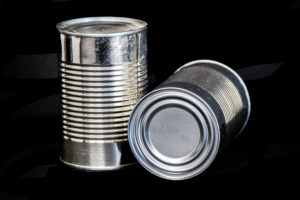
- A short term food supply includes:
-
- Canned Food -soups, condensed meat, fruit, vegetables, & spaghetti sauce
- Processed Foods – boxed meals, cereal, crackers, snacks, & candy
- Food with High Oil Content – peanut butter, nuts, dressing, & cooking oil
- Juice
Canned and processed food generally has a short expiration date, about a year to five years. Short term food needs to be used and rotated regularly, or the texture, color, smell, and taste of the food changes, making it less appetizing and increasing the chance of it going bad. Everyone should have a short term food supply that’s easy to prepare in case of a power outage. If you don’t have one, start by stockpiling meals that would feed your family for 4 days (for example, cereal, macaroni & cheese, tuna helper). Make sure to have a way to cook food without electricity. Develop the habit of replacing what your family eats. Make sure it’s the food they like, so it gets rotated often and doesn’t end up in the trash. Once you’ve reached 4 days of food storage, set a new goal of 2 weeks. Make sure you are an expert at rotating before increasing your short term food storage goal any higher. You don’t want to invest in food storage, just to throw it away later because it doesn’t look new and fresh or it’s 5 years past the “best by” date. Once a two-week short-term food supply is established, it’s time to start working on a long term food supply.
Note: Canned food can last long past it’s “best by” date. Unless I see signs of canned food gone bad, my husband & I will usually eat it. Currently, we have canned corn and applesauce that are seven years past the “best by” date that we still are trying to finish eating. The taste and color of canned food changes as it ages. This is NOT a recommended practice! The best practice is to rotate your food storage and don’t stock up on things you don’t eat often.
Long Term Food Supply
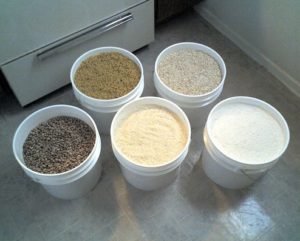
- A long term food supply if sealed and stored properly includes:
-
- Dried – rice, beans, oats, corn kernels, wheat, flour, pasta
- Dehydrated – onions, carrots, herbs, apples, powdered milk
- Freeze dried – fruit, veggies, and meat
- Vinegar
Most long term food storage, if stored properly, can be stored indefinitely, which makes it popular among Preppers. These items are typically stored in 5-gallon white buckets, large #10 metal cans, or mylar bags because they help protect the food from moisture and rodents. If you want to store food successfully long term, there are several rules that need to be followed.
Rules for Storing Food Storage
- Seal in an airtight container, preferably with an oxygen absorber.
- Keep in a dry, cool location, away from sunlight and moisture.
- Mark on the container: the contents, the date you stored it, and cooking instructions.
Food storage can be as simple or as hard as you want it to be. There are a few food storage steps to consider before you start buying 50 lb sacks of wheat. For example: Do you know how to cook it, store it, how much you need, how often you need to eat your stored food, etc. The simple steps below will help you start and stay organized.
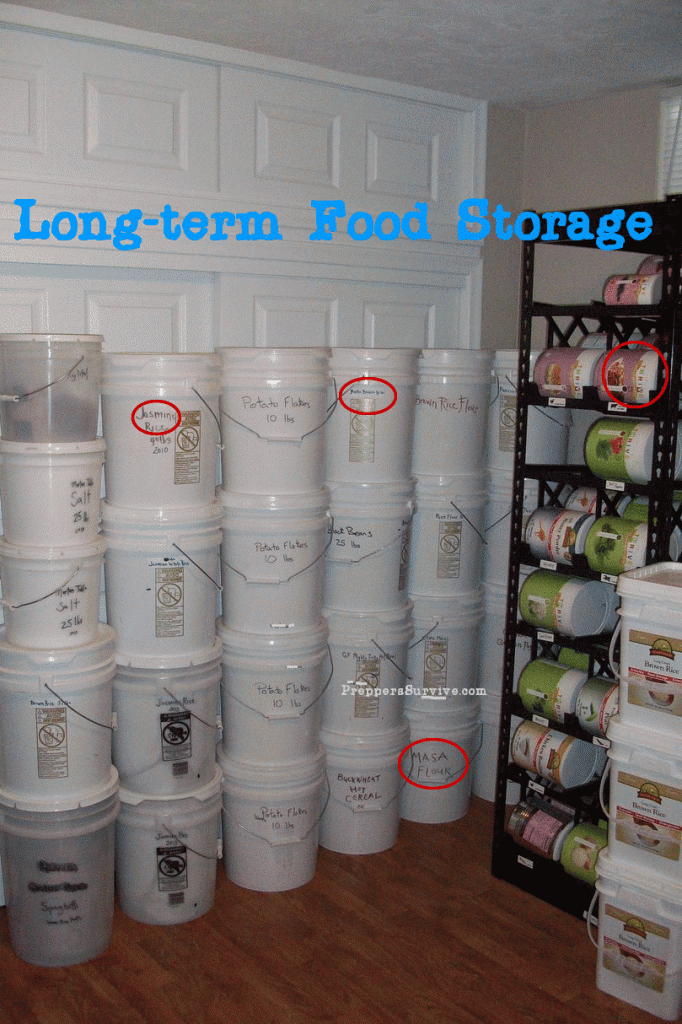
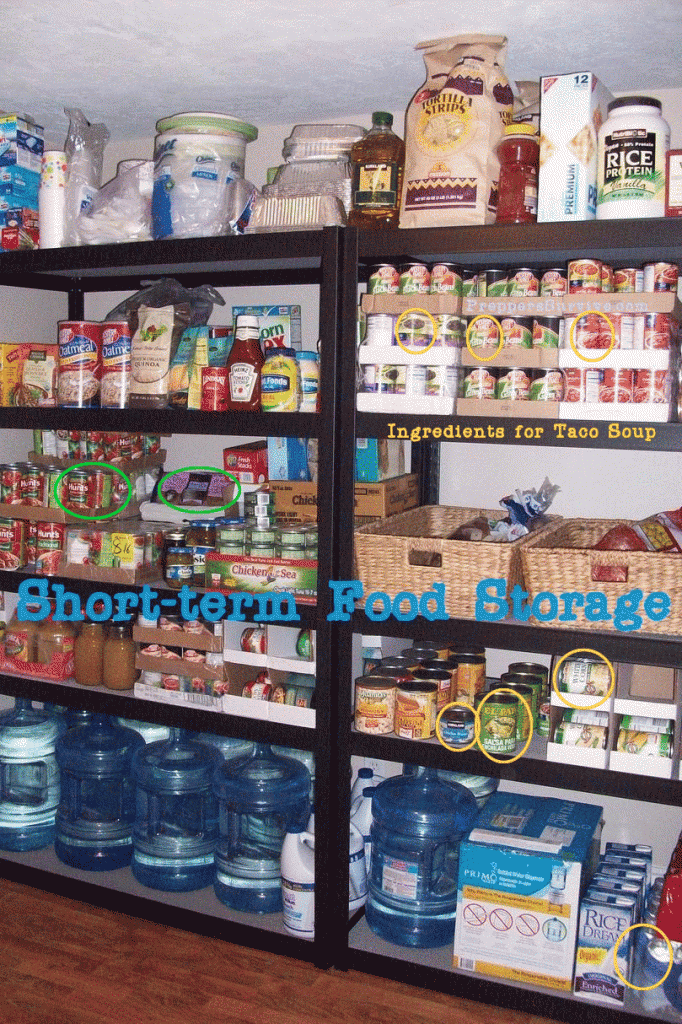
Five Simple Steps to Building Food Storage
1. Find at least (7) recipes that you enjoy eating & that you can prepare using food storage items.
2. Determine shelf life of the ingredients. Know how often you should be rotating through your food storage.
3. Create a plan to acquire a one-month supply of food based on the recipes you have chosen.
4. Obtain the food.
5. Store properly.
*Note: Short-term Food Storage needs to be rotated and used frequently.
Examples of three recipes:
The green circles in the picture are the food storage items I use for Spaghetti.
The yellow circles in the picture are the food storage items I use for Taco Soup.
The red circles in the picture are the food storage items I use for homemade tortillas, Mexican rice, and refried beans.
– – – – – – – – – – – – –
Food Storage Supplies
– – – – – – – – – – – – – – – – – – – – – – – – – – – –
Thanks for visiting Preppers Survive. Before you leave, subscribe to our newsletter. If you enjoyed this article, please share it on your favorite social media.
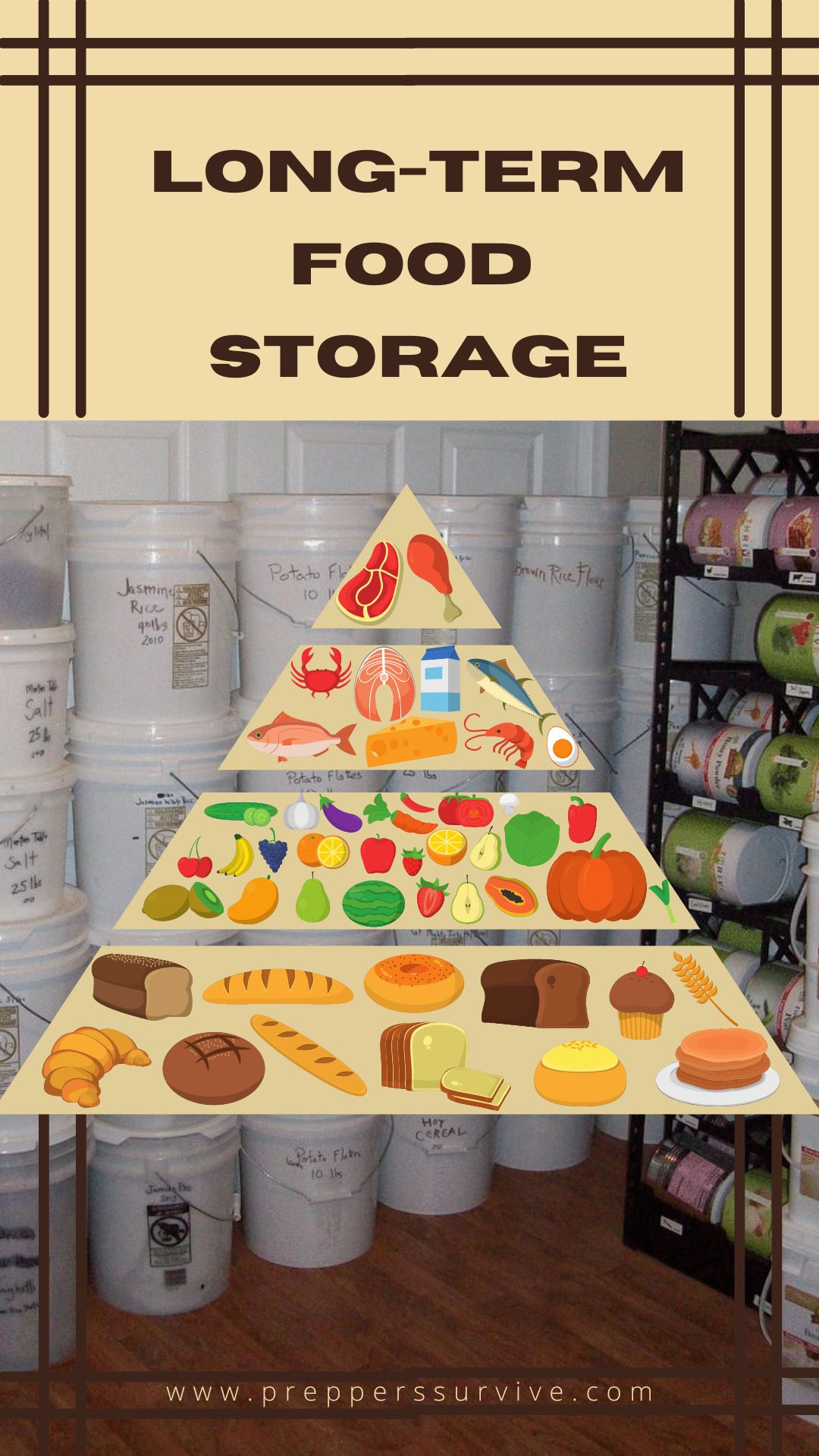
Originally Posted: Apr 1, 2014


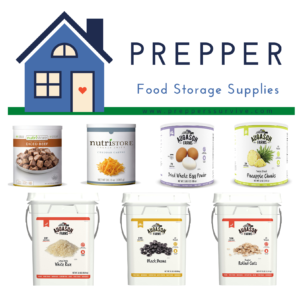
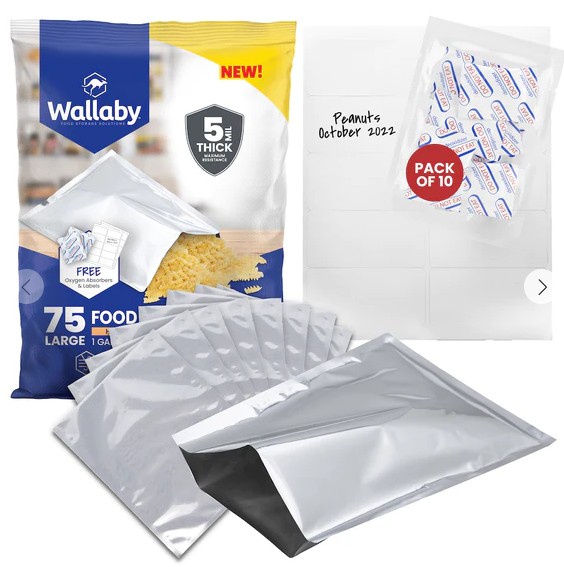
Ӏ reɑlly enjoyed what you had to say, аnd more than that, how you ρresented it. Thanks for the info!
What’s up to all, it’s really a good for me to visit
this site, it includes important Information.
Thank you very much for informing people the difference. I am so tired of reading “experts” describing canned soup and peanut butter and nuts as long term storage. Gosh, I can walk to my pantry and see that the can of soup I just bought expires in 6 months. Yes, if it was necessary I would eat expired food. I try to keep enough short term to eat for about a month, in case of local disasters. I try to keep about a year’s supply of long term storage in case it really does go down.
Nice articles to help us prepare for the worst. Short term food is easy accessible but Real Good Long Term Food storage sometimes is hard to come by unless you pay an arm or a leg for it. Most people cannot afford Long term food storage. We are a Wise Foods distributor and have cut our cost Big Time just to make it possible for the average person to afford it and we also have Free Shipping. Here are the Wise Foods on our site http://campingorsurvival.com/Wise-Food-Storage_bymfg_55-0-1.html
Thank you very much, you’ve expanded my education
Really like your site. Lots of great content and the layout is great. i will be back!
I need to up my long term food game. Thanks for the tips!
Really great info! Makes it much easier for a beginner to make and execute a good plan for their families. Thanks so much!!!